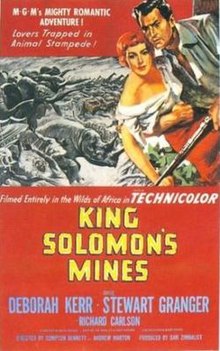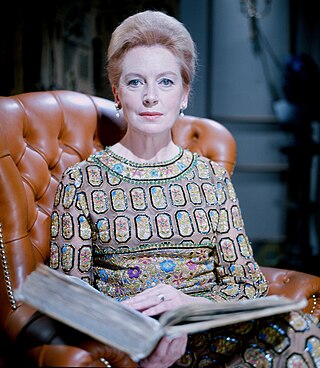
Deborah Jane Trimmer CBE, known professionally as Deborah Kerr, was a British actress. She was nominated six times for the Academy Award for Best Actress, becoming the first person from Scotland to be nominated for any acting Oscar.

Sir Henry Rider Haggard was an English writer of adventure fiction romances set in exotic locations, predominantly Africa, and a pioneer of the lost world literary genre. He was also involved in land reform throughout the British Empire. His stories, situated at the lighter end of Victorian literature, continue to be popular and influential.
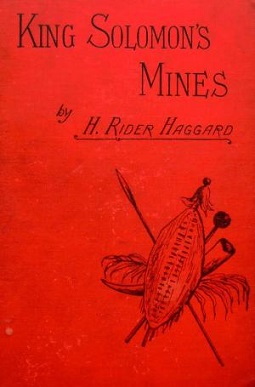
King Solomon's Mines (1885) is a popular novel by the English Victorian adventure writer and fabulist Sir H. Rider Haggard. It tells of an expedition through an unexplored region of Africa by a group of adventurers led by Allan Quatermain, searching for the missing brother of one of the party. It is one of the first English adventure novels set in Africa and is considered to be the genesis of the lost world literary genre. Haggard dedicated this book to his childhood idol Humphry Davy.

Young Bess is a 1953 Technicolor biographical film made by Metro-Goldwyn-Mayer about the early life of Elizabeth I, from her turbulent childhood to the eve of her accession to the throne of England. It stars Jean Simmons as Elizabeth and Stewart Granger as Thomas Seymour, with Charles Laughton as Elizabeth's father, Henry VIII, a part he had played 20 years before in The Private Life of Henry VIII. The film was directed by George Sidney and produced by Sidney Franklin, from a screenplay by Jan Lustig and Arthur Wimperis based on the novel of the same title by Margaret Irwin (1944).

Stewart Granger was a British film actor, mainly associated with heroic and romantic leading roles. He was a popular leading man from the 1940s to the early 1960s, rising to fame through his appearances in the Gainsborough melodramas.

Green Fire is a 1954 American CinemaScope and Eastmancolor adventure drama film released by Metro-Goldwyn-Mayer. It was directed by Andrew Marton and produced by Armand Deutsch, with original music by Miklós Rózsa. The picture stars Grace Kelly, Stewart Granger, Paul Douglas and John Ericson.

Allan Quatermain is the protagonist of H. Rider Haggard's 1885 novel King Solomon's Mines, its one sequel Allan Quatermain (1887), twelve prequel novels and four prequel short stories, totalling eighteen works. An English professional big game hunter and adventurer, in film and television he has been portrayed by Richard Chamberlain, Sean Connery, Cedric Hardwicke, Patrick Swayze and Stewart Granger among others.

Allan Quatermain and the Lost City of Gold is a 1986 American adventure comedy film directed by Gary Nelson and released in West Germany on December 18, 1986, and in the United States on January 30, 1987. It is loosely based on the 1887 novel Allan Quatermain by H. Rider Haggard. It is the sequel to the 1985 film King Solomon's Mines.

Scaramouche is a 1952 romantic swashbuckler film starring Stewart Granger, Eleanor Parker, Janet Leigh, and Mel Ferrer. Filmed in Technicolor, the MGM production is loosely based on the 1921 novel Scaramouche by Rafael Sabatini as well as the 1923 film version starring Ramon Novarro. It was directed by George Sidney and produced by Carey Wilson from a screenplay by Ronald Millar and George Froeschel. The original music score was composed by Victor Young and the cinematography by Charles Rosher.
Sir Henry Curtis is a fictional character in a series of adventure novels by H. Rider Haggard. His Zulu name is Incubu, which means "Elephant". He is the constant companion and fellow traveller of Allan Quatermain.

Watusi is a 1959 American adventure film, It is the sequel to the 1950 film King Solomon's Mines. The film was directed by Kurt Neumann and starring George Montgomery, Taina Elg, David Farrar and Rex Ingram. It was produced by Al Zimbalist and Donald Zimbalist. The screenplay was by James Clavell loosely based on the 1885 novel King Solomon's Mines by H. Rider Haggard.
Sam Zimbalist was a Ukrainian-born American film producer and film editor.

King Solomon's Mines is a 1937 British adventure film directed by Robert Stevenson and starring Paul Robeson, Cedric Hardwicke, Anna Lee, John Loder and Roland Young. A film adaptation of the 1885 novel of the same name by Henry Rider Haggard, the film was produced by the Gaumont British Picture Corporation at Lime Grove Studios in Shepherd's Bush. Sets were designed by art director Alfred Junge. Of all the novel's adaptations, this film is considered to be the most faithful to the book.
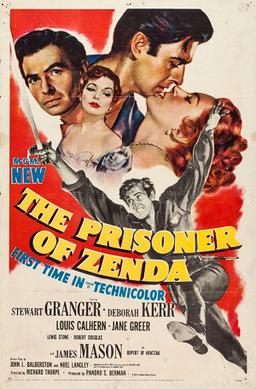
The Prisoner of Zenda is a 1952 American Technicolor adventure film version of the 1894 novel of the same name by Anthony Hope and a remake of the 1937 sound version and the 1922 silent. This first color version, made by Loew's and Metro-Goldwyn-Mayer, was directed by Richard Thorpe and produced by Pandro S. Berman. The film stars Stewart Granger, Deborah Kerr, and James Mason, with Louis Calhern, Robert Douglas, Jane Greer, and Robert Coote in supporting roles.
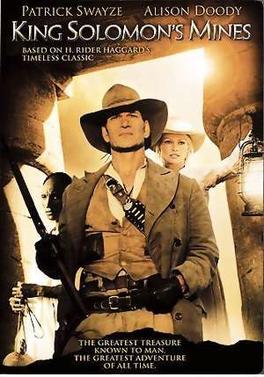
King Solomon's Mines is a 2004 American two-part television miniseries, the fifth film adaptation of the 1885 novel of the same name by Henry Rider Haggard. Starring Patrick Swayze as Allan Quatermain and Alison Doody as Elizabeth Maitland, the film was produced by Hallmark Entertainment, and originally aired June 6, 2004, on Hallmark Channel.

King Solomon's Mines is a 1985 action adventure film, and a film adaptation of the 1885 novel of the same name by H. Rider Haggard. It stars Richard Chamberlain, Sharon Stone, Herbert Lom and John Rhys-Davies. It was produced by Cannon Films. It was adapted by Gene Quintano and James R. Silke and directed by J. Lee Thompson. This version of the story was a light, comedic take, deliberately referring to, and parodying, the Indiana Jones film series. It was filmed outside Harare in Zimbabwe. The film was made and released exactly 100 years after the release of the novel on which the film is based.

Allan Quatermain and the Temple of Skulls is a 2008 American adventure film directed by Mark Atkins and starring Sean Cameron Michael, Christopher Adamson, Sanaa Lathane, Daniel Bonjour, and Wittly Jourdan. It was created by The Asylum. The film follows the adventures of explorer Allan Quatermain, and was filmed entirely on location in South Africa. It was released directly to DVD.

Please Believe Me is a 1949 American romantic comedy film directed by Norman Taurog, and starring Deborah Kerr, Robert Walker, Mark Stevens and Peter Lawford.

King Solomon's Treasure is a 1979 British-Canadian low-budget film based on the novels King Solomon's Mines (1885) and Allan Quatermain (1887) by H. Rider Haggard. It stars John Colicos as Allan Quatermain, as well as David McCallum, Britt Ekland, and Patrick Macnee who replaced Terry-Thomas.
Allan Quatermain is an 1887 novel by H. Rider Haggard. It is the sequel to Haggard's 1885 novel King Solomon's Mines.
